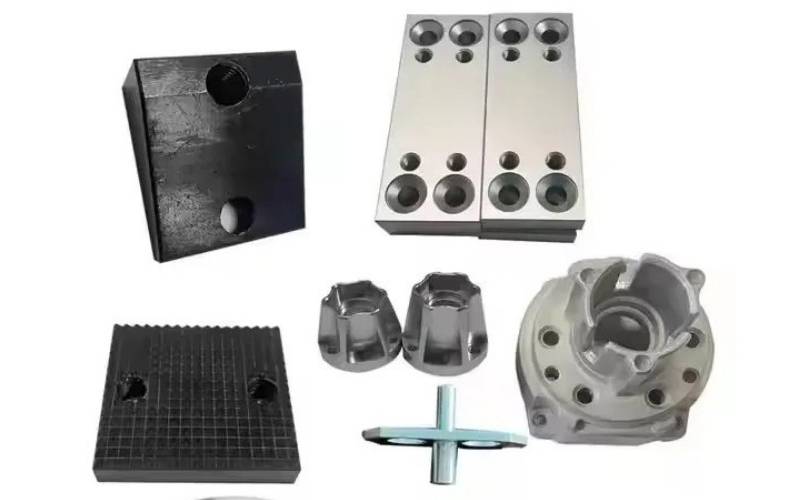When it comes to precision machining, two core processes dominate the field: CNC milling and CNC turning. While both are essential in modern manufacturing, understanding the differences between them is crucial for selecting the right method for your part’s geometry, material, and function.
At Audapu, we provide professional CNC turning and milling services, helping customers worldwide achieve precise, cost-effective, and reliable part production. In this article, we’ll break down the differences between CNC milling and turning, and help you determine which one is the best fit for your specific application.
What Is CNC Milling?
CNC milling is a subtractive machining process that uses rotating cutting tools to remove material from a stationary workpiece. The workpiece is typically fixed to a table that moves along multiple axes (3-, 4-, or 5-axis systems), allowing for the creation of complex geometries.
Advantages of CNC Milling:
-
Ideal for flat, contoured, or complex 3D surfaces
-
Multiple features (holes, slots, pockets) can be machined in one setup
-
High precision and repeatability
-
Suitable for both prototyping and production runs
Typical CNC Milling Applications:
-
Housings and enclosures
-
Mechanical brackets
-
Aerospace and automotive components
-
Tooling and fixture parts
What Is CNC Turning?
CNC turning is a process where the workpiece rotates while a stationary cutting tool removes material. This method is typically used for creating cylindrical or conical parts. At Audapu, we specialize in high-precision CNC machining turning parts, delivering fast turnaround and excellent surface finishes.
Advantages of CNC Turning:
-
Fast and efficient for round parts
-
Excellent surface finish for external and internal diameters
-
Cost-effective for large-volume production of rotational parts
-
Tight dimensional tolerance achievable
Typical CNC Turning Applications:
-
Shafts and axles
-
Bushings and collars
-
Connectors and threaded components
-
Pins and rollers
CNC Milling vs. Turning: What’s the Difference?
| Feature | CNC Milling | CNC Turning |
|---|---|---|
| Workpiece Movement | Stationary | Rotates on a spindle |
| Tool Movement | Rotating tool moves along multiple axes | Stationary cutting tool |
| Best For | Complex surfaces, flat parts | Round, symmetrical parts |
| Efficiency for High Volumes | Moderate | High |
| Surface Finish | Good | Excellent |
| Typical Parts | Plates, housings, fixtures | Shafts, rods, threaded parts |
Which Process Suits Your Part Best?
Choosing between CNC milling and turning depends on several factors:
1. Part Geometry
If your part is round or tubular, turning is likely the better option. For flat or complex geometries, milling provides greater versatility.
2. Volume Requirements
For high-volume production of simple rotational parts, turning is more time- and cost-efficient. Milling is better suited for low- to medium-volume production of complex shapes.
3. Tolerances & Surface Finish
Turning typically offers tighter tolerances and smoother finishes, making it ideal for components requiring precision fits.
4. Material Type
Both processes can handle metals (aluminum, steel, brass, titanium) and plastics (POM, PTFE, nylon), but turning tends to generate less heat, which is advantageous for heat-sensitive materials.
CNC Milling and Turning Parts at Audapu
At Audapu, we provide full-service CNC milling turning services using state-of-the-art equipment and quality control protocols. Whether you need custom CNC turning and milling parts or complete assemblies, we are equipped to deliver:
-
ISO-certified quality and tight tolerances
-
Rapid prototyping and high-volume production
-
Competitive pricing for global customers
-
Support for a wide range of materials and finishes
We serve industries including:
-
Industrial automation
-
Medical and healthcare
-
Aerospace and defense
-
Energy and electronics
Combined CNC Milling and Turning: Hybrid Solutions
For some complex parts, combining milling and turning in a single setup may be necessary. Many of our CNC machines are multi-axis hybrids capable of both milling and turning operations without needing secondary setups.
This hybrid approach allows for:
-
Faster lead times
-
Reduced handling errors
-
Greater part complexity
-
Lower cost per unit
Whether it’s CNC machining turning parts for a mechanical shaft or a complex enclosure needing both milled faces and turned bores, Audapu has the solution.
Conclusion
Understanding the difference between CNC milling and turning is key to optimizing your manufacturing workflow. While both processes have unique strengths, the best choice depends on your part’s geometry, functional requirements, and production volume.
Audapu offers professional CNC turning and milling services tailored to your project’s needs. With advanced technology and experienced engineers, 👉 Need help choosing the right process? Contact Audapu today to discuss your custom machining needs.

